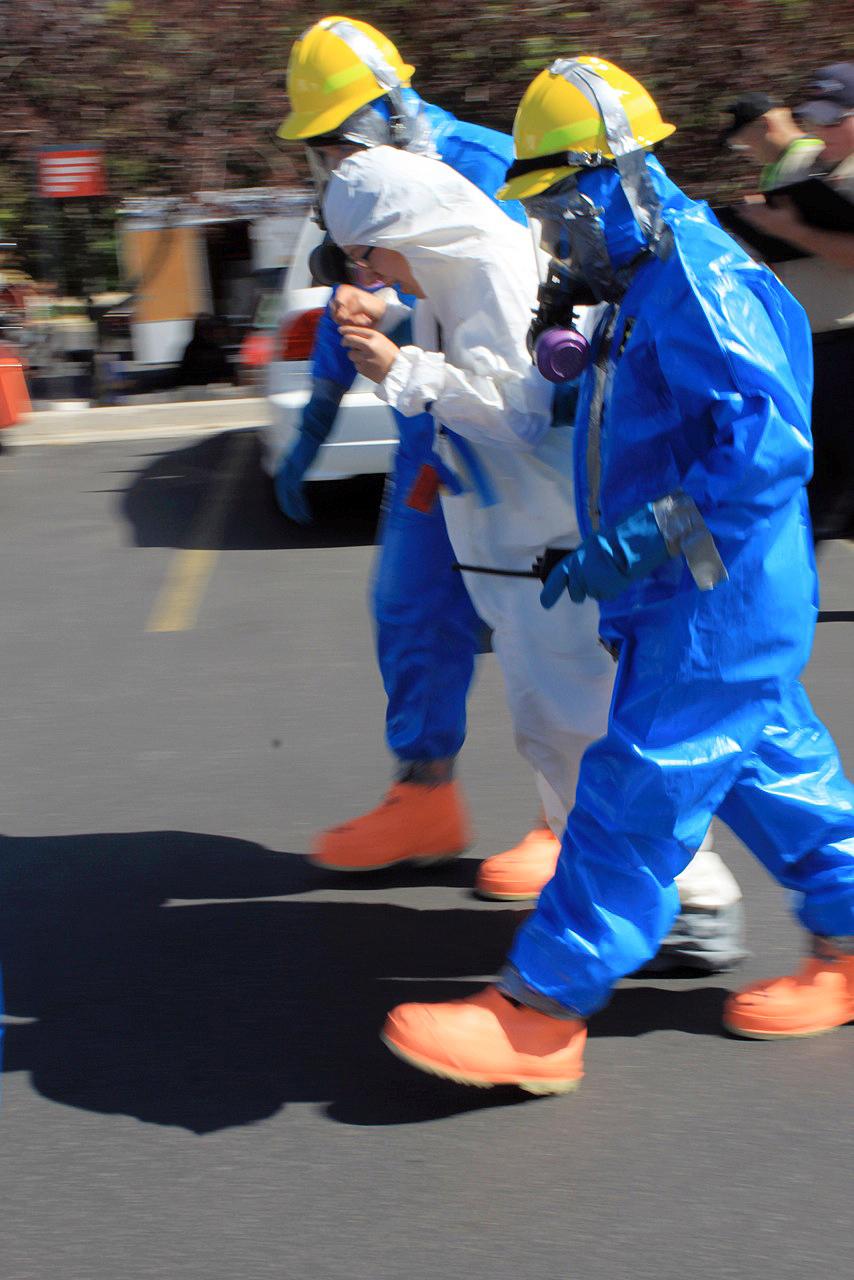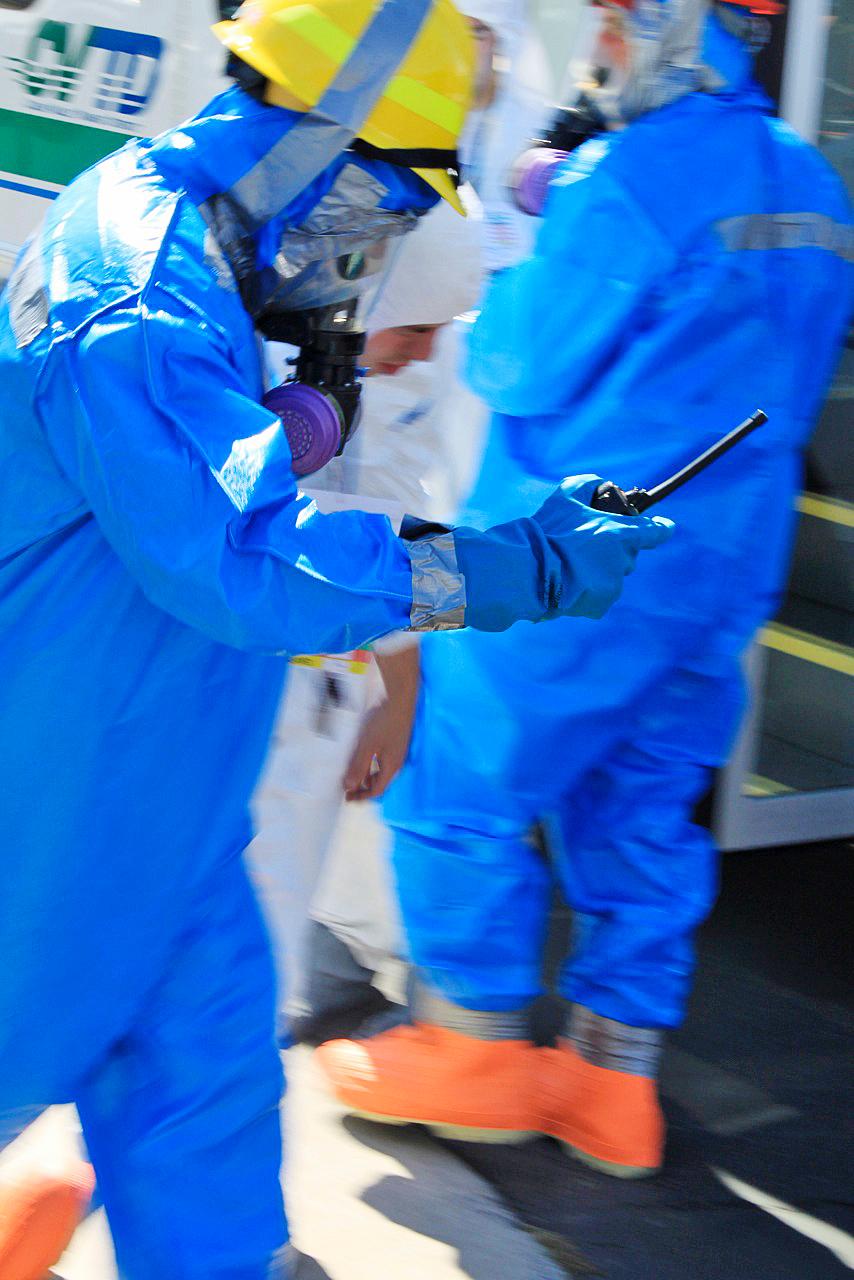Students act as ‘victims’ in staged explosion
“Logan Fire Department received a call at 10 a.m., to respond to a reported explosion at the church located near the hospital,” said Craig Humphreys, assistant fire chief and fire marshal, to a group of journalists at Logan Regional Hospital, Saturday morning.
Humphreys said people contaminated by chemicals from the bomb were treated.
Public information officer and account manager Julie Sanders said the bomb contained methyl parathion, a toxic pesticide. Sanders occasionally updated the journalists on the situation until the drill was officially over.
The explosion didn’t happen. The patients and journalists were volunteers.
During the drill, Sanders said the hospital set up a decontamination tent outside the emergency entrance where volunteers were decontaminated. She addressed the press as if the explosion was real, as part of the simulation.
USU student and volunteer patient Emily Decker said glowing gel was put on the volunteers in place of the methyl parathion. After the students arrived at the hospital, they were put through the decontamination tent to be washed clean, she said.
“We went through the washing stations and then afterward, the incident commander came and he black lighted us because the glow stuff would only glow under black light, and that’s how they analyzed how well they scrubbed us down,” Decker said.
USU student Liz Bond said many of the volunteers were given specific instructions and backgrounds. She said some volunteers were unconscious and one was supposed to pretend to have a concussion.
“I was 16-weeks pregnant. It was a crazy experience for me,” Bond said. “I got off the bus, and I couldn’t walk; and I was freaking out, and I actually did hyperventilate a little bit, so that part was a little bit real; and I was just crying and crying.”
Logan Regional Hospital CEO Michael Clark said the hospital does a drill to prepare it for a possible disaster.
“Our intent in doing this is just to run through the scenarios — see that we’re prepared for these disasters — because every time we learn from them,” Clark said. “We do this once or twice a year to try to figure out where our weak points are and try to improve.”
Clark said one of the places they could improve on is communication. He said there was a delay in the notification of the drill and communication at the beginning of the drill was “spotty.”
“Because of the delay of the notification, we had patients walk in that were contaminated with the chemical and caused the contamination of the hospital so we would have to go back and clean those things up as well,” Clark said.
Clark said the staff performed well with setting up the decontamination tent and decontaminating the volunteers.
Dan Miller, head of security, said security’s job is to secure the building and provide crowd control.
“For my team, the first thing that broke down was the lack of an alert early on. We need the information quickly,” Miller said. “It’s a lot of building to secure. In this scenario we needed to be able to secure the building, and route all the contaminated patients through one portal so they didn’t contaminate the whole hospital. We got a couple that slipped through before we were able to get the building secured.”
Christina Roberts normally does fundraising for the hospital but volunteered as a public information officer for the drill. The drill wasn’t just to practice treating contaminated patients, Roberts said. It also tested their information system by giving scripts to student journalists.
“When the press is trying to get to us, we want to be able to know that they can get us through the phone system — they can get us through email, they can get to the contacts they need,” Roberts said.
Roberts said the drill allowed the hospital staff to practice the process of giving out information about the drill itself.
“It’s not just dealing with the information — getting it out — it’s the actual process we’re doing.”
The student journalists played dual roles. They received scripts asking them to play the parts of Herald Journal or Salt Lake Tribune reporters, while they reported on the drill for various other news sources.
– chris.w.lee@aggiemail.usu.edu



